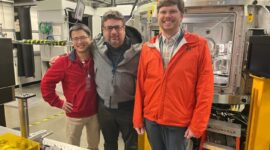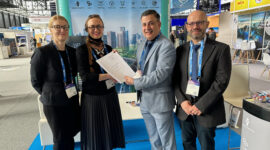An article published by the TTÜ Power Electronics Research Group, which was awarded the title of TTÜ best research article in 2017 in the field of engineering and technology, proposes a revolutionary power conversion technology intended for the residential and small commercial photovoltaic (PV) applications.
The head of the TTÜ Power Electronics Research Group, Lead Research Scientist at the Department of Electrical Power Engineering and Mechatronics Dr. Dmitri Vinnikov says: “This PV microconverter helps you to get most from the sun. Having superior input voltage regulation properties and high power conversion efficiency the converter is able to extract all the available power from the PV modules regardless their operating conditions.”
The article “High-Performance Quasi-Z-Source Series Resonant DC–DC Converter for Photovoltaic Module-Level Power Electronics Applications” published in the high-impact international scientific journal IEEE Transactions on Power Electronics introduced, for the first time, the innovative concept of PV microconverter that is based on unique combination of ultra-wide range topology and advanced control, which results in efficient energy harvest from the shaded PV modules.
“This functionality has been enabled thanks to the implementation of the integrated buck-boost power conversion principle based on the impedance-source technology, which is continuously developed by our research group since 2009,” Dmitri Vinnikov explains.
The proposed converter has many advanced features such as utilization of fully integrated resonant tank to minimize size and cost and avoid use of external resonant components, multimode control with smooth transition between modes, continuous input current for maximum energy harvest, and inherent short-circuit protection. The converter is capable of ensuring stabilized 400 V output voltage within the sixfold variation of the input voltage (from 10 to 60 V) and with the maximum efficiency of over 97%, which distinguishes it from the all existing PV module level power electronic systems,” Dr. Vinnikov says.
Additional information: Lead Research Scientist at the School of Science, Department of Electrical Power Engineering and Mechatronics Dr. Dmitri Vinnikov, dmitri.vinnikov@ttu.ee
Reference: Dmitri Vinnikov, Andrii Chub, Elizaveta Liivik and Indrek Roasto “High-Performance Quasi-Z-Source Series Resonant DC–DC Converter for Photovoltaic Module-Level Power Electronics Applications“, IEEE Transactions on Power Electronics, vol. 32, No. 5, pp. 3634-3650, May 2017
Original post by Tallinn University of Technology
 Back
Back



